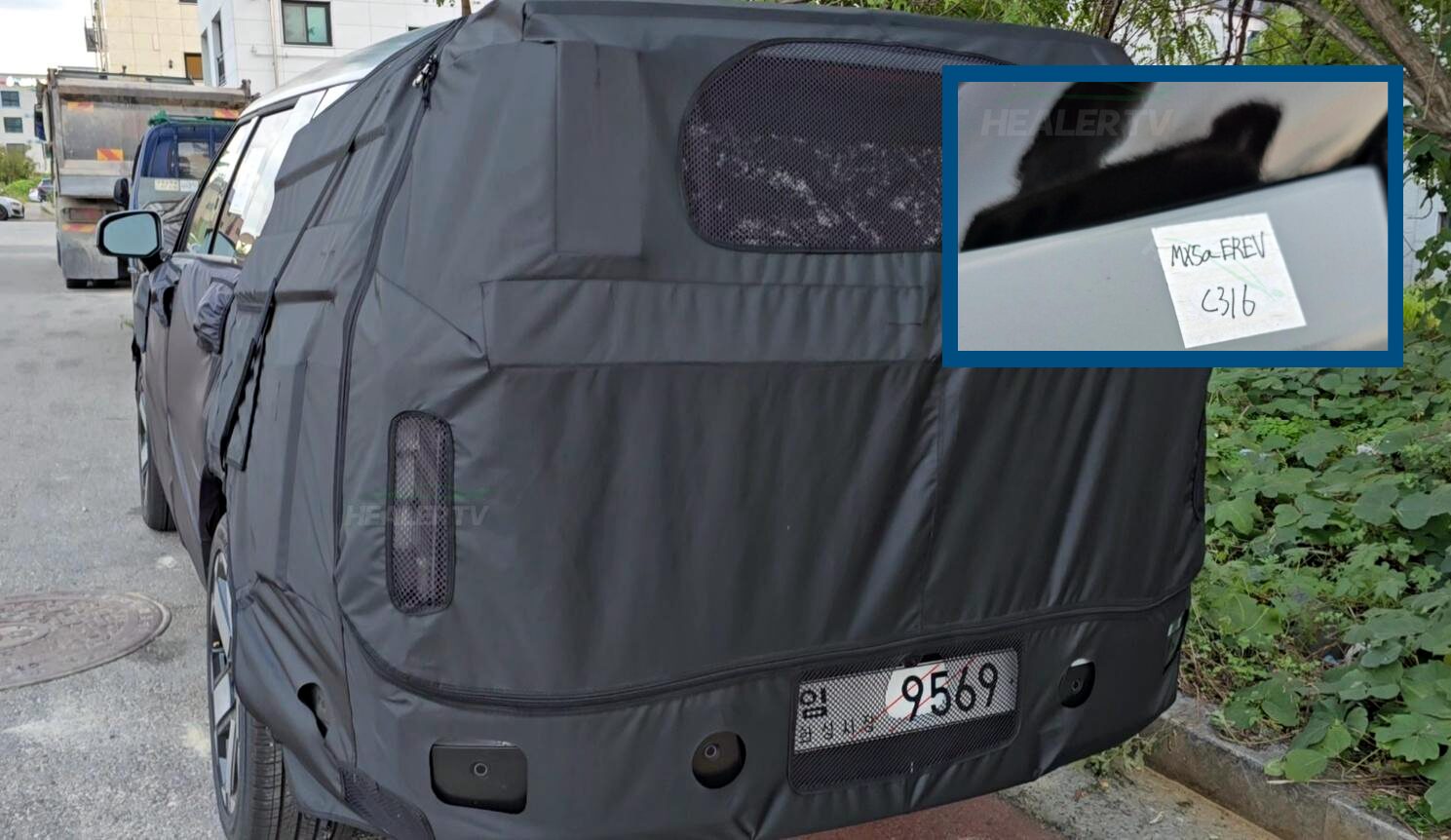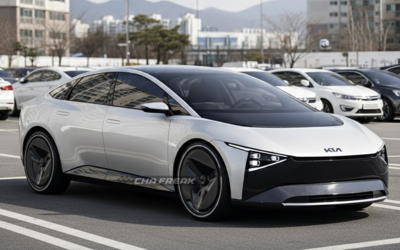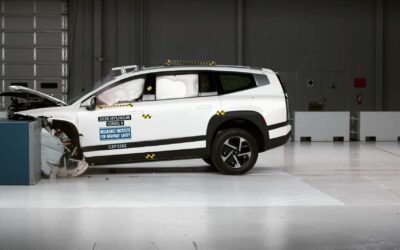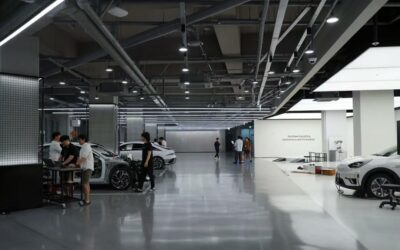The first spy photos of the Hyundai Santa Fe EREV (Extended Range Electric Vehicle) prototype have surfaced, confirming that Hyundai is developing an all-new electrified variant of its popular midsize SUV. The prototype, heavily camouflaged and wearing a sticker labeled “MX5a EREV,” was recently caught thanks to our colleagues at Healer TV while parked, revealing the company’s next step toward advanced hybrid-electric mobility.
“MX5a EREV” Sticker Confirms Santa Fe’s Electrified Evolution
The “MX5” designation identifies the vehicle as part of the fifth-generation Santa Fe, which debuted globally in 2023. The added “A” indicates that this prototype is a North American-market version, while “EREV” stands for Extended Range Electric Vehicle — a powertrain type that combines the smooth driving experience of an EV with the long-distance range of a gasoline-assisted system.
This sticker offers the clearest confirmation yet that Hyundai is expanding its electrified lineup beyond plug-in hybrids and full battery EVs. The Santa Fe EREV will serve as the brand’s first range-extended hybrid SUV, positioned to bridge the gap between the Santa Fe Hybrid/PHEV and upcoming IONIQ EVs.
A Closer Look at the Santa Fe EREV Prototype
While the prototype remains heavily disguised, several details hint at its EREV-specific design. The test vehicle appears nearly identical to the current Santa Fe, suggesting that Hyundai is still using the existing body shell while testing new powertrain components underneath. Observers noted an additional charging port, likely for plug-in capability, and distinct rear-bumper sensors, possibly related to thermal management or energy monitoring systems.
The presence of a large exhaust pipe indicates that the vehicle retains a gasoline engine, but unlike a typical hybrid, the EREV system uses its engine solely as a generator to recharge the battery. This setup allows for electric-only driving most of the time, with the engine providing backup power when the battery depletes — effectively removing range anxiety while maintaining an EV-like driving feel.
What to Expect From the Santa Fe EREV Powertrain
Technical details remain under wraps, but based on Hyundai’s current hybrid systems, the Santa Fe EREV could utilize a 2.5-liter turbocharged gasoline engine paired with a moderate-capacity lithium-ion battery. Unlike a plug-in hybrid, the engine would not drive the wheels directly — a key distinction that makes this configuration closer to a serial hybrid like the Chevrolet Volt or Nissan e-Power models.
Expected benefits include:
- EV-like acceleration and refinement
- Over 900 km of combined driving range
- Lower running costs compared to full gasoline models
- Convenient plug-in charging for short-distance commutes
Why the Santa Fe EREV Matters
The appearance of the Santa Fe EREV prototype highlights Hyundai’s growing commitment to diversified electrification strategies. Instead of relying solely on battery-electric models, the company is developing solutions suited for markets where charging infrastructure remains inconsistent — particularly in North America, where longer driving distances are common.
By introducing an extended-range version of the Santa Fe, Hyundai aims to attract customers who appreciate the driving characteristics of EVs but require the flexibility of gasoline refueling for longer trips.
Expected Launch Timeline
Although Hyundai has yet to announce an official release date, industry insiders believe the Santa Fe EREV could launch by the end of 2026 or early 2027 taking advantage of the facelift model, following the introduction of the first Genesis EREV models. The prototype’s advanced stage of testing suggests that Hyundai’s engineering development is already well underway.





